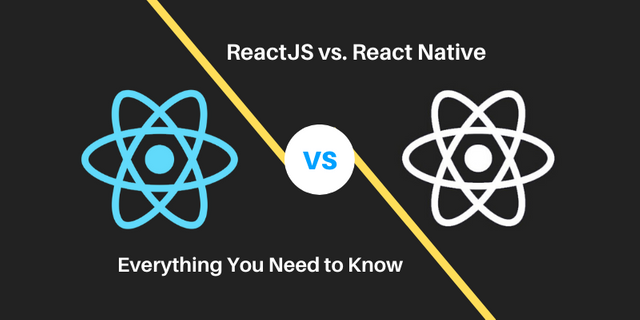ReactJS vs. React Native: Everything You Need to Know

Many times you stuck with the situation that, which technology, framework, or application is better than another OR which technology will you use to get better results? Like, Java and JavaScript are some of the burning topics where non-tech persons and tech individuals had discussions time-to-time. One of the main reason for their confusion is that they have the almost same name but when we compare them technically than its quite easy to distinguish.
Many technologies present in the market who is having the same parent, similar names, and similar technology backbone; but still, they are different from each other. ReactJS and React Native are two technologies who are having the same but different similarities. In this blog, I’m going through the main differences between ReactJS vs. React Native that you need to know before you choose one for your app development.
The Basic difference between ReactJS & React Native
ReactJs is a JavaScript library designed by Facebook for building interactive user interfaces, or you can state that React is a tool for building UI components.
On the other hand, React Native is just the consequence of React. It is a framework that enables building native apps using JavaScript. It provides rich mobile UI from declarative components by using the same design as React. It is also possible to React Native to build cross-platform native mobile apps for Android and iOS.
Comparison based on setup and bundling
ReactJS is a JavaScript library where React Native is a framework. When developing a new project with ReactJS, you need to choose a module from a bundler as per your project need. But with React Native, you don’t need to choose one as React-Native comes with everything you need. It just like a ready-made package for you.
Comparison based on DOM and Styling
React components have their state and render methods. Both state and render are useful for displaying the components. The output of the render method is a React element (or can say JS object) that maps to the DOM element.
On the other hand, React Native doesn’t use HTML to render the app but to render it uses other components that map the actual real native iOS or Android UI components. Thus, you won’t be able to reuse any libraries you previously used with ReactJS.
Note: In both ReactJS and React Native, React is the base abstraction, but they are for React DOM (for the web platform) and React Native respectively. Thus, the syntax and workflow remain similar, but the components are different.
To style your React components, you will have to create a CSS file. And, to add style on React-Native components, you will have to create stylesheets in JavaScript.
Comparison based on Animations
In React, developers create an animation using CSS and adding classes to HTML tags. Or, you can use libraries and components associated with it such as React-transition-group, react-animations, React Reveal, and TweenOne.
On the other hand, React Native is one step ahead of React. It uses JavaScript to animate your app components by Animated API provided by React-Native.
Comparison based on Navigation
ReactJS uses React-router for navigation, which already in use of most of the React web application development. On the other hand, React Native uses the Navigator component that easily navigates between the two scenes. And also, properly working on both Android and iOS devices.
Comparison based on developing tools
Another comparison is with developing tools. This is the beauty of using React Native that it can use most of the developer tools you use with ReactJS. When you are going to develop an app using React Native, you get a few developer tools out of the box from React without the need of installing anything. When you want to do small changes in your app, you can use Hot Reloading. And, if big changes are needed, then components like Live Reload is used to reload the entire app.
So, what is the ideal fit for your application?
As we discussed, React uses JavaScript and JSX to view your web pages. It also ideal for building dynamic, high performing, responsive UI for your web interfaces.
While React Native is a framework that makes the native app fit for your Android and iOS devices. It gives your React Native app development a truly native feel. But, at the end, which is more important is that your requirement.
So, you just make sure that whatever the technology you choose, you must utilize it fully as per your requirement and make it worthy of your time and money.